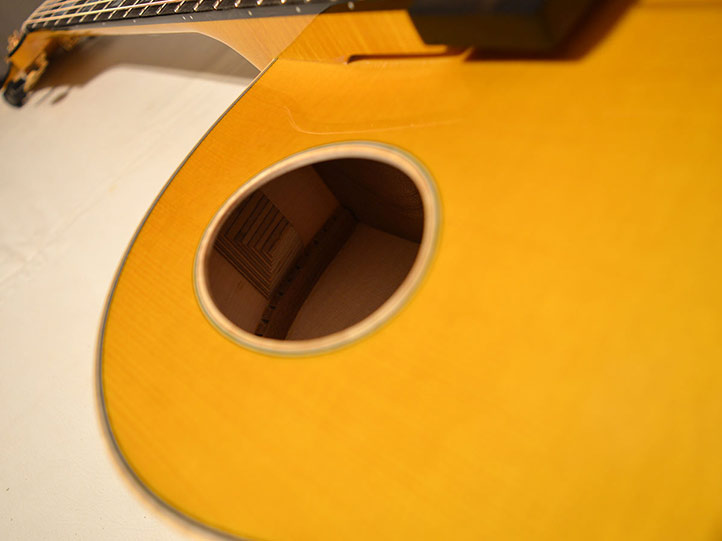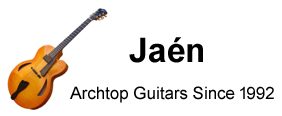Many guitarists are tired of large, even huge, archtops that have a thin weak acoustic tone. It happens all the time, at all price levels.
This is a different archtop, one that you will enjoy without an amplifier. But you can also plug it into one and still hear its big body, only louder.
Carved Curly Maple back and sides.
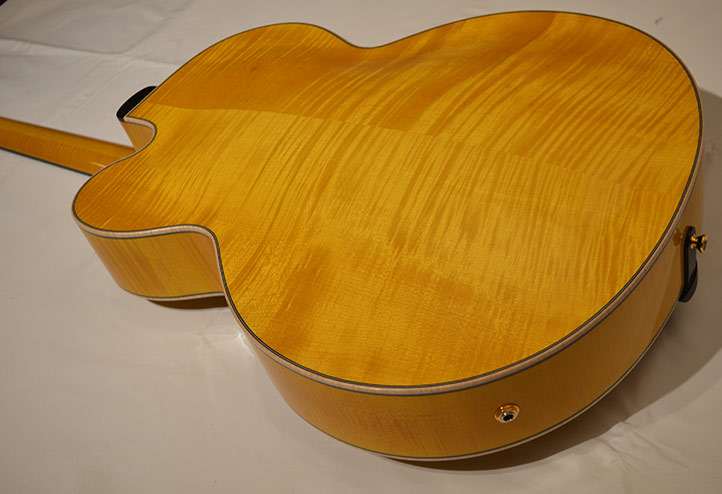
European spruce top, with soundhole at upper bout. My acoustic guitars don't have f-holes, that weaken excessively the very thin tops like this one.
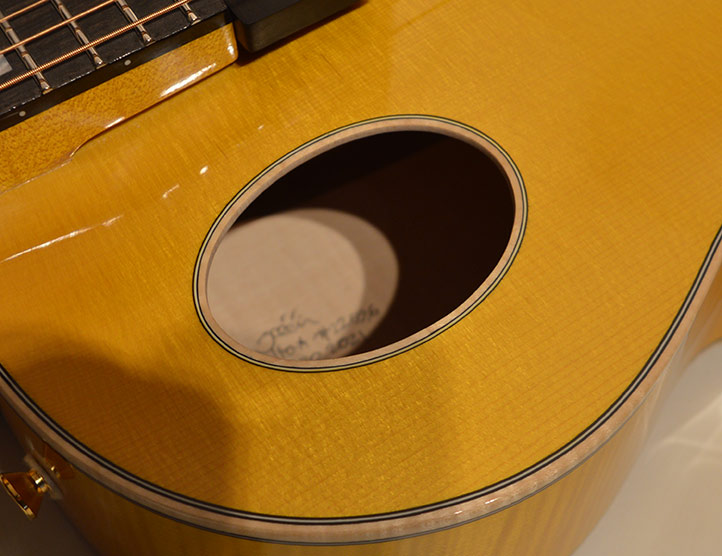
Maple neck, with 25 1/2″ (648 mm) scale length. The nut has a width of 1 11/16″ (43 mm), made of bone. The fretboard is made of ebony, with mother-of-pearl markers (split blocks) and stainless steel frets (Jescar FW47104SS).
Curly maple bindings with fiber purflings.
Ebony peghead face. The peghead is larger than usual. This is something that I do for 17 and 18 inch guitars.
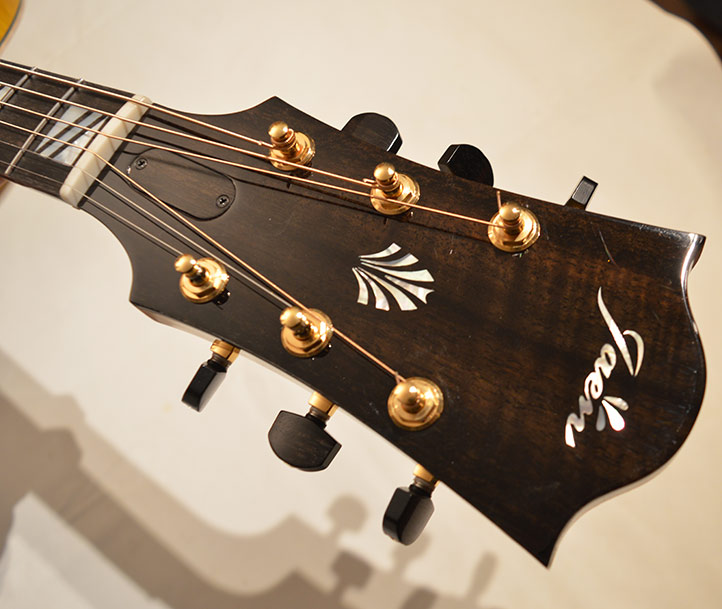
Ebony tailpiece with reliable, light string grounding system.
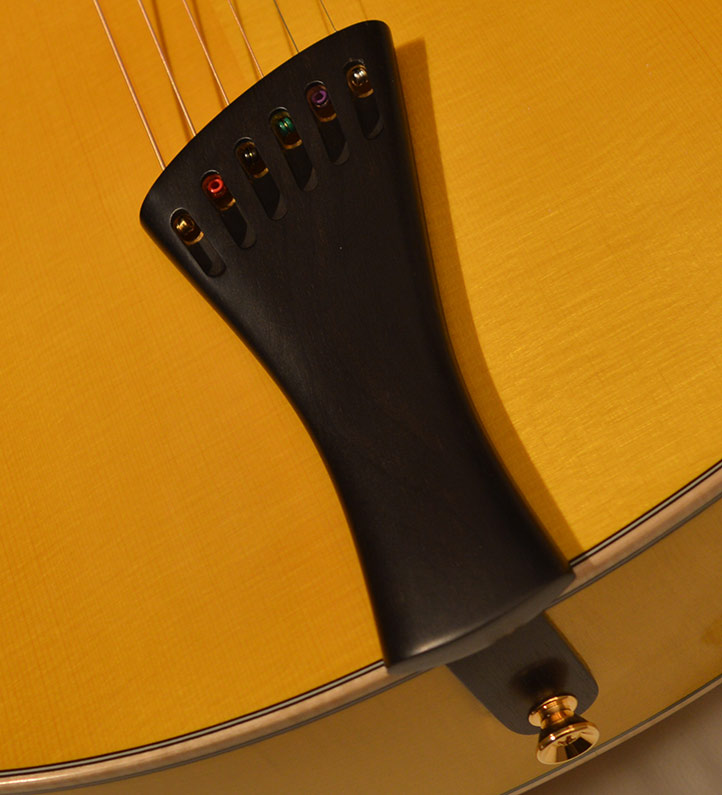
Light ebony bridge, with hollow foot and mini saddle with a carbon core.
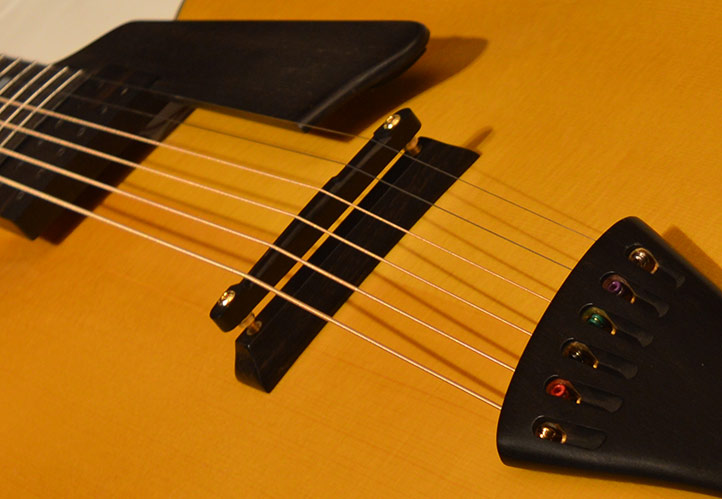
The jack is here. Some will think it is not adequate for an acoustic instrument, but I must say that these conventional jacks are much more reliable than the ones that go through the tailblock. I prefer the location also.
Internally, this jack has a "cable tensioner" (my own design) that keeps the cable tight inside the guitar, far from the soundbox walls, without stressing the connections:
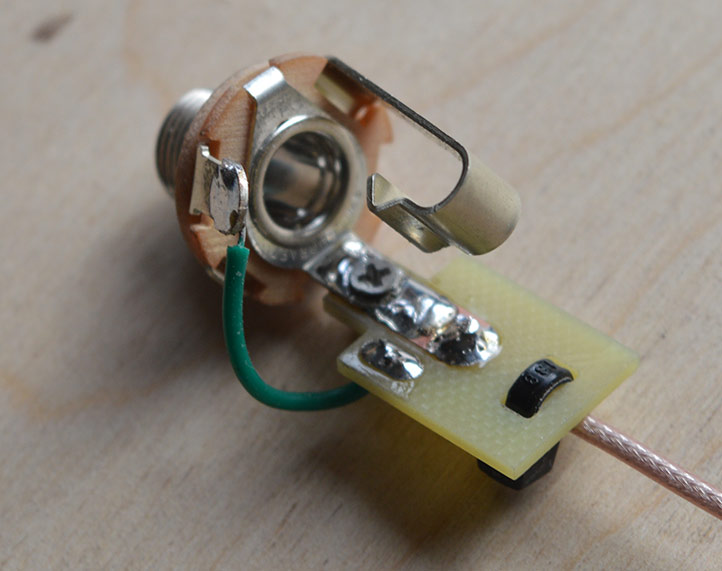
Volume and tone controls with long life components.
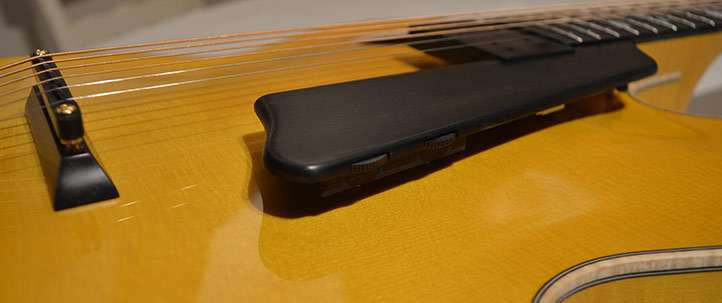
One of my own pickups, with ebony case. These are the best floating pickups that I know, and I have tried many.
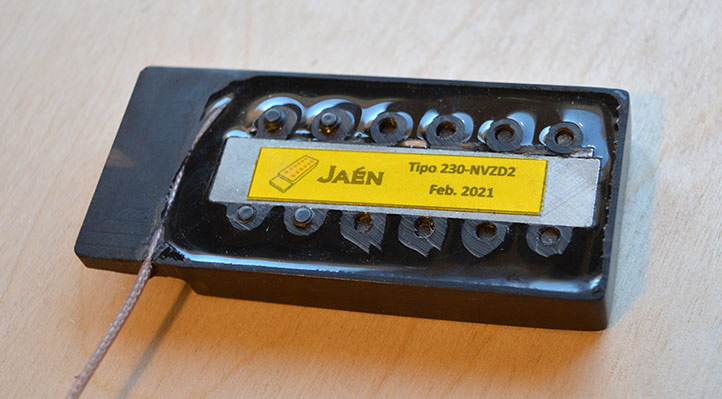
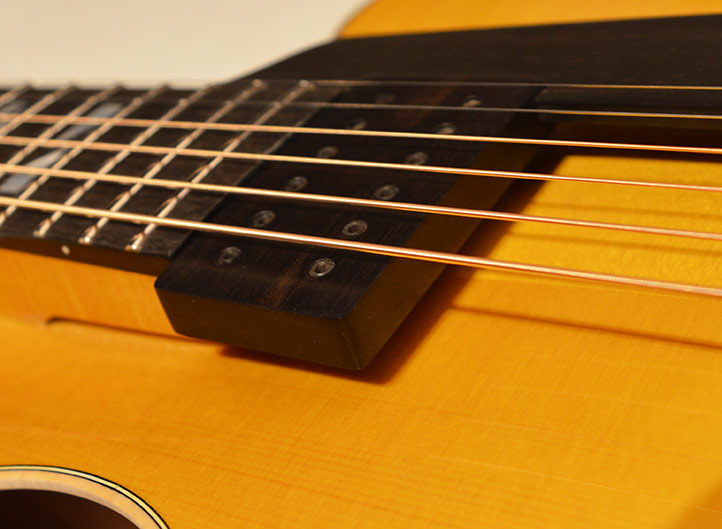
Gold Schaller M6-135 machines, with ebony knobs.
D’Addario EJ16 strings (12-53, bronze).
Tinted nitrocellulose finish.
Ebony pickguard.
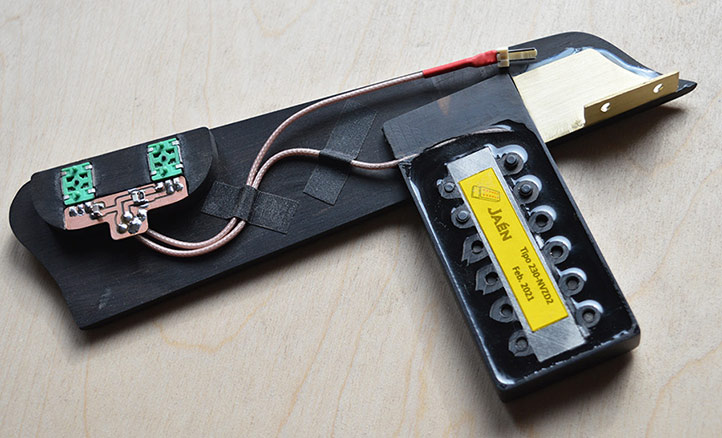
The strap holder is located here. This is the position that I prefer, and I think it is the best. And the worst? Any on which the guitar is supported by the heel of the neck. This always leads to the lacquer line between the body and neck to break.
There is an internal reinforcement for this:
